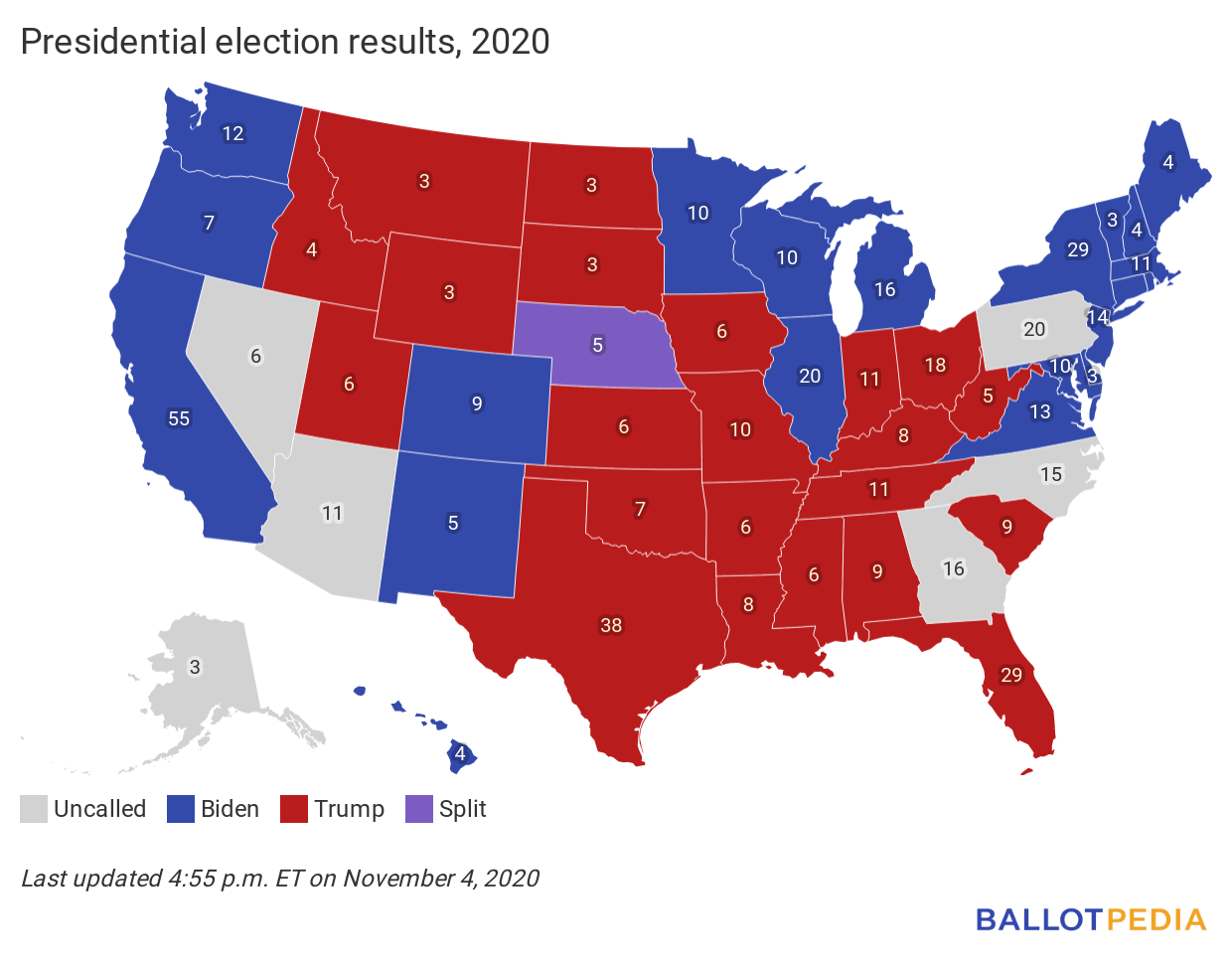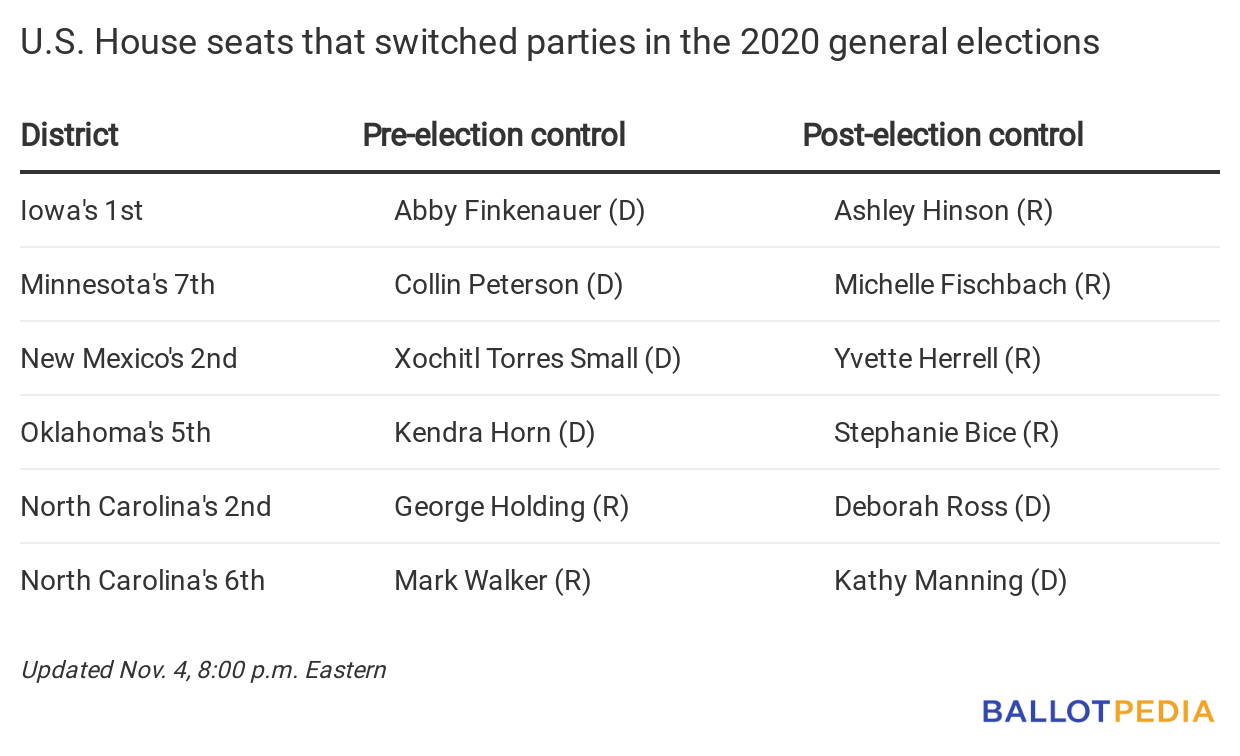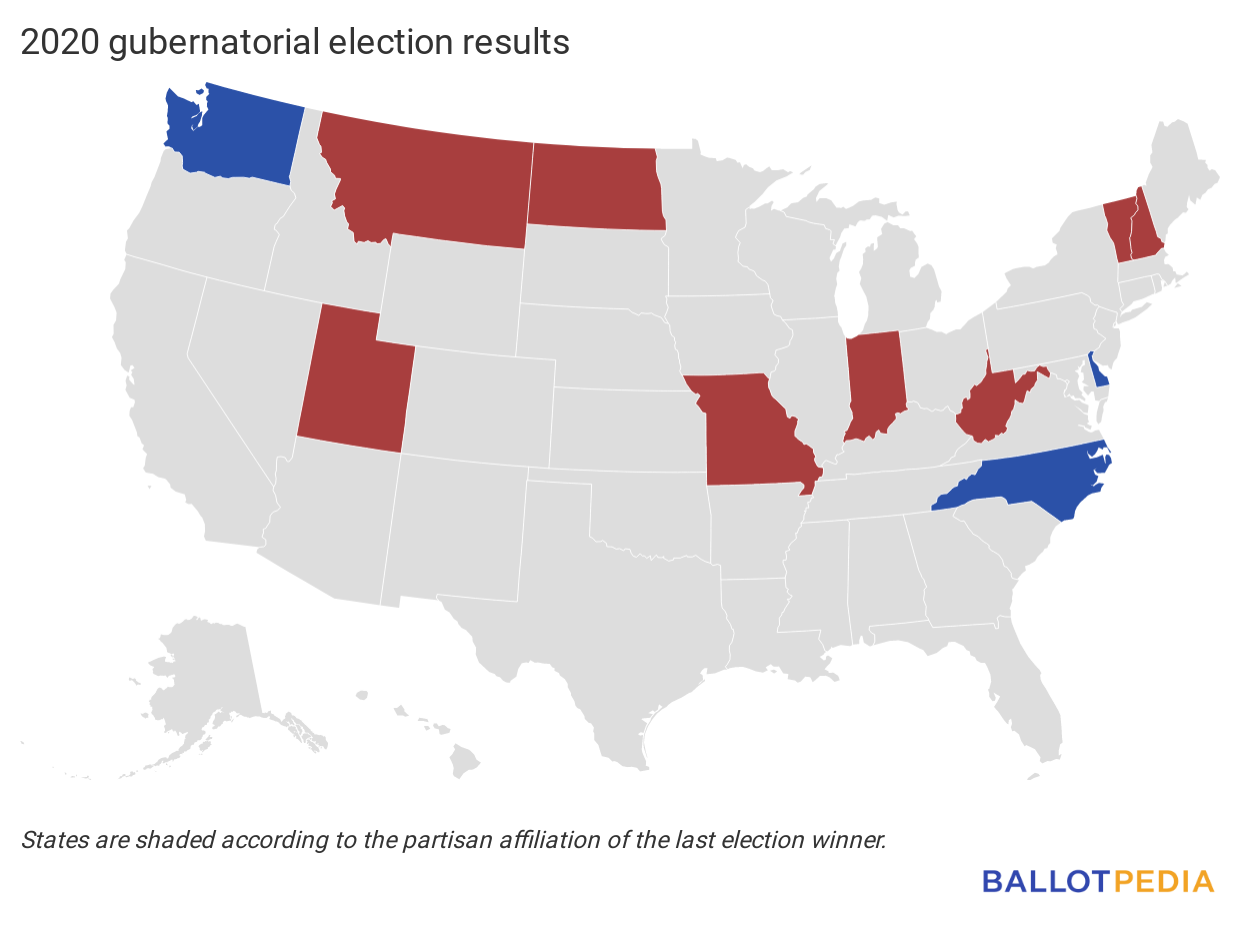Where the 2020 elections stand
It was another busy day and late-night tracking election results. All results in this email are as of 11:30 p.m. EST.
Here are some links for you to bookmark to stay on top of things:
- A rundown of states’ official results certification dates can be found here. The first state certification date is Nov. 10 for Louisiana, Oklahoma, South Dakota, Vermont, and Virginia.
- For updates throughout the day today, visit our results hub page at Ballotpedia.org.
- Stay tuned for our next email update later this morning via our Help Desk newsletter.
- For details about how recounts and challenges work, check out the information we have compiled on our Election Help Desk.
- Click here to learn how we decide to call an election.
Now, let’s get into the projected results.
Who won the presidency?
Media outlets still hadn’t predicted a definitive winner, and neither candidate had conceded. So far, the five media outlets we're tracking had unanimously called 44 states and Washington, D.C., in the presidential election. Six states remained uncalled, according to Ballotpedia’s election calling policy—Alaska, Arizona, Georgia, Nevada, North Carolina, and Pennsylvania—in addition to Maine’s 2nd Congressional District.
President Donald Trump (R) had won states totaling 213 electoral votes to Joe Biden’s (D) 237.
On Wednesday, Donald Trump’s campaign filed lawsuits in Georgia and Pennsylvania. Subscribers to the Ballotpedia Help Desk newsletter received detailed updates about these yesterday. Click here to learn more.

Who controls the U.S. Senate?
Control of the U.S. Senate as a result of the 2020 elections had not been determined. Twenty-eight of 35 races had been called, and Republicans had 47 seats, while Democrats had 46 seats (including two independents who caucus with Democrats).
Outlets had not reached consensus in Alaska, Arizona, Georgia (regular and special), Maine, Michigan, and North Carolina.
Republicans and Democrats had each flipped one seat:
- Tommy Tuberville (R) defeated incumbent Doug Jones (D) in Alabama.
- John Hickenlooper (D) defeated incumbent Cory Gardner (R) in Colorado.
Who controls the House of Representatives?
Control of the U.S. House as a result of the 2020 elections had not been determined, although media outlets project the Democratic Party to maintain their majority. Three-hundred forty-seven of the 435 races had been called. Republicans had won 173 seats to Democrats' 170.
Republicans flipped four seats, and Democrats flipped two, according to Ballotpedia’s election calling policy.

Some outlets projected that at least two other districts had flipped, though they had not yet met our race calling policy: Florida’s 26th and 27th Congressional Districts.
State executives
Eleven states held elections for governor. Incumbents won nine of the races. Spencer Cox (R) won in Utah, where the Republican incumbent did not run for re-election. Greg Gianforte (R) won in Montana, making it the only governorship to change partisan control in 2020. After the 2020 elections, Republicans will hold 27 governorships to Democrats' 23. Seven of the elections this year were in states with a Republican governor, and four were in states with a Democratic governor.


|